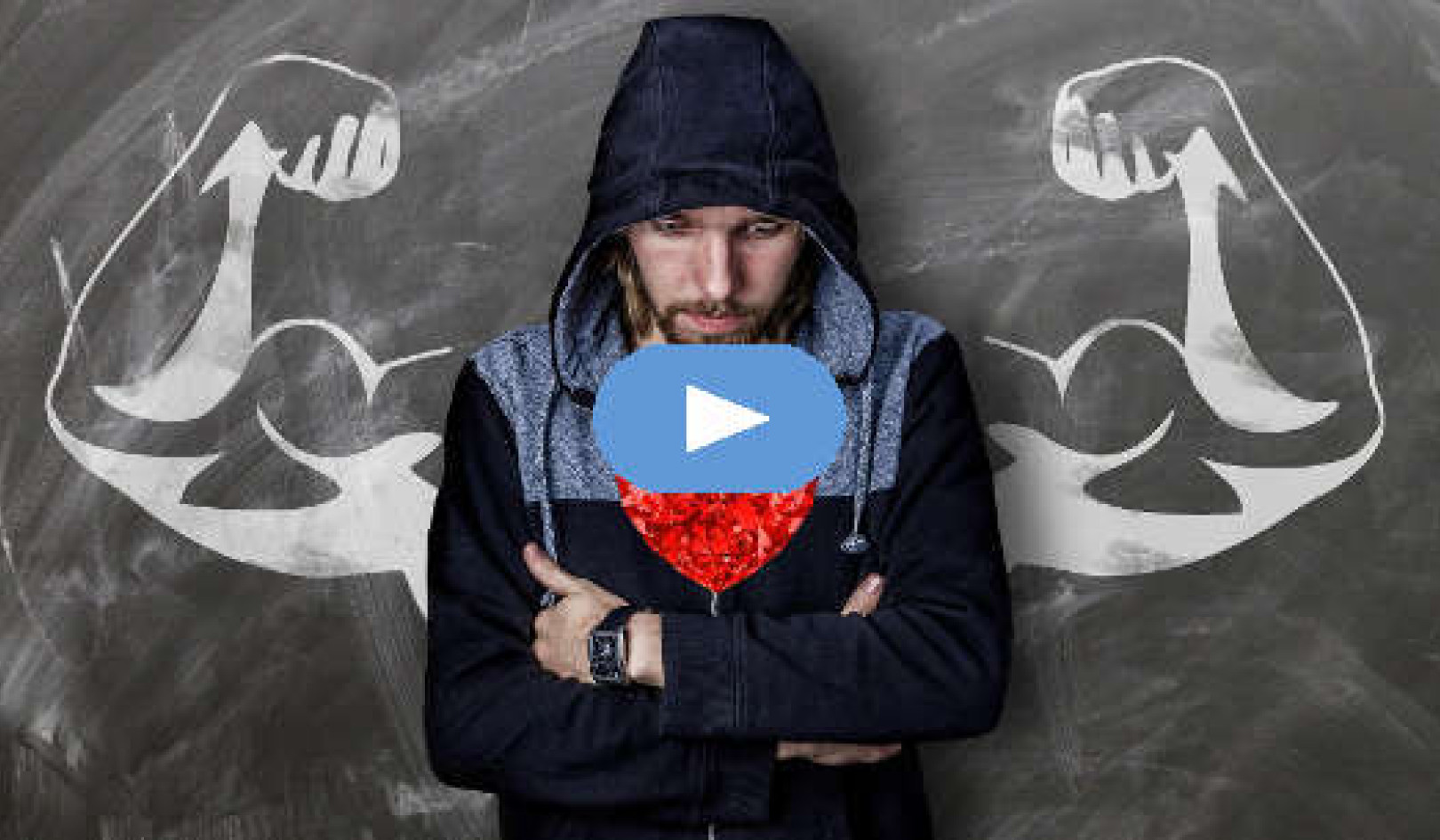
Everybody’s a work in progress. I’m a work in progress.
I’ve never arrived.... I’m still learning all the time.
-- Renée Fleming
(Editor's Note: While this article is geared towards helping children attain emotional health, its tenets apply to adults as well, regardless of age.)
In my first real job, I remember sitting in my corporate office and sending an email when I was feeling angry. Before long my boss, Rich, who was the CEO, called me into his office and said, “Maureen, I need you to employ the twenty-four-hour rule.” Not knowing what this rule was, I inquired, and Rich explained his request for me to wait twenty-four hours before responding to any email that got me annoyed or angry. I quickly agreed, since I was only twenty-two years old and wanted to keep my first professional job. Little did I know that after twenty-four hours, my anger always dissipated and I could respond calmly. This was progress.
Children make progress incrementally, too, especially as they become emotionally healthier. One day your child stops pushing his sibling and instead walks away stomping his feet when he’s angry. Not perfect, but certainly progress. Our goal in raising emotionally healthy children is to guide them to recognize emotions, help them understand what they can do to cope with them, and help them make better choices. It doesn’t mean your child goes from major tantrums to tantrum-free in thirty days — although that’s possible. What it does mean is that with help, things get better.
My client Max, age eight, is a perfect example. He came to me earlier in the year because of his anger issues at school. Angela, his mom, was exhausted from getting urgent calls from the principal. As a single mother whose stress was understandably at an all-time high, she needed assistance. Connecting with Max, I realized he had unresolved grief about his dad dying two years earlier, and his anger issues only emerged during the month his school was celebrating dads (ouch). So I helped Max constructively express his deep feelings and learn new tools for handling his anger, which moved him in a positive direction.
What I know for sure is that today’s children are smarter than ever and can learn how to handle their emotions. And a little guidance can go a long way, so start where you are, and before you know it, progress will happen.
Learning To Be Emotionally Healthy
Your emotions follow your thoughts
just as surely as baby ducks follow their mother.
-- DAVID D. BURNS
Children developing emotional balance are learning how to regulate their bodies and emotions, which begins with their thoughts. They are starting to see that they’re bigger than their biggest emotions and that they’re in charge.
Guiding children on the path of positive emotional health, and helping them learn the skill of balance, means we’re helping them acquire:
- cognitive control
- emotional awareness (knowledge)
- self-control (behavior modification)
- decision-making abilities
Ultimately, we want to help our children make smart choices, even when they’re experiencing challenging emotions like frustration, disgust, or anger. The more practice boys and girls have at expressing emotions constructively — especially the trickiest ones like anger, which are so fast-moving — the better they can do in the moment when you’re not around and they want to push someone on the playground. Through practice, they learn how to walk away and make a smarter choice.
Something I tell children is that it’s okay to want to hit someone, but hitting someone is not acceptable (unless, of course, it’s in self-defense). There really are no unhealthy emotions, but it’s what we do with them that matters.
More helpful emotions like compassion and gratitude naturally move your children toward emotional balance, while challenging emotions like jealousy and anger move them away from balance. So along with handling challenging emotions, we want to help our children cultivate positive inner qualities and emotions like compassion, kindness, and generosity, which mightily move them toward well-being.
The Emotional Health Equation
Just as your car runs more smoothly and requires less energy to go faster and farther when the wheels are in perfect alignment, you perform better when your thoughts, feelings, emotions, goals, and values are in balance. -- BRIAN TRACY
Children are all different, especially in their personalities and emotional proclivities. It’s no surprise that some tend toward sadness and others have happy-go-lucky personalities. But no matter what your children’s unique personality and emotional needs are, they need you to connect and emotionally coach them toward self-mastery.
Children are learning how emotions work, what to do with the challenging ones and how to create helpful ones, and the power of paying attention to their bodies and feelings in becoming emotionally healthy. They’re having the direct experiences of putting new ideas and tools into practice as well as refining how they move themselves toward better feelings.
Beyond the mindset of emotional health are the habits or practices that when done regularly can pave positive pathways in your children’s developing brains. Instead of defaulting to a knee-jerk reaction such as screaming, they learn, for example, that they can take a mindful moment or shoot hoops in the backyard.
This simple equation of mindset plus habits equals emotional health is the starting point for helping your children move from reactivity to responsiveness, rigidity to flexibility, and carelessness to careful choices. It sets a path where you now know where you’re going and can help get your children moving with you in that direction, hopefully with more ease.
Habits Create Health
We are what we repeatedly do.
-- WILL DURANT
Creating habits can help us move toward any goal, whether it’s building muscles at the gym or learning how to calm and center. The power of habit is immeasurable. In her book Better Than Before, Gretchen Rubin shares how habits change our lives little by little, especially when we schedule those habits.
When we do something regularly without needing to think about it, it becomes a habit. Although I have encouraged the development of mindfulness in children and ourselves, there is also a powerful ally in mindlessness. Habits help us take our resistance and our minds out of the equation. The ability to create a habit helps us not overthink something, and whether it’s hitting the gym or doing a gratitude or breathing exercise with our children, it gets hardwired into our lives.
Creating habits of positive emotional health with our children can help them master their emotions and become happier. Children build their lives on what we show them, the words we say to them, and the habits we help them create. It’s up to us to help them build healthier habits, especially around how to stop, calm, and bring themselves back to emotional balance.
Regular habits, not periodic ones, are important to nurture in children. They help children acquire the ability to calm faster despite whatever may be happening, and then come back to their center.
My suggestion is to choose one thing and incorporate it into your emotional health program. Whether that is meditating together or practicing daily gratitude, there really is great power in adding one thing. Before you know it, things change and progress happens.
One family I know added a Peace Corner in their house, so when their children were upset they could go to that corner, which was full of books, stuffed animals, art, and games, to calm themselves and regain their center. One time, five-year-old Samuel told his mom when she was angry, “Mom, I think you need five minutes in the Peace Corner,” and she chuckled because it was true.
Three Steps to Success
Success is nothing more than
a few simple disciplines, practiced every day.
-- JIM ROHN
Each step could fill a book, but I have simplified them so we can teach and role-model them to our children:
1. stop
2. calm
3. make a smart choice
Stop: Children, as you know, move quickly, and helping them slow down and stop is the first step in helping them change emotional directions. The emotion may be something helpful like excitement, but too much of it can cause them to knock something over in the dining room, so the three steps are for emotions that are both helpful and challenging. Of course, when children experience challenging emotions, it’s essential to slow their momentum and help them steer their emotional boat in a new, healthier direction.
Calm: Calming is something we learn throughout our lives, but certainly the things that helped me calm as a child still help me calm as an adult. Remember, you are helping your children build lifelong tools of calming and centering. I grew up on the East Coast, and I would go into nature to feel calm, and today, on the West Coast, that still remains my number one way to feel relaxed (besides meditation and laughter). While I may have climbed more trees when I was little, today when I have all ten toes in the sand, my stress lifts off instantly.
Make a smart choice: Along with stopping and calming, the ability to make a smart choice is essential. Whether a child decides to scream or take deep breaths, push her sister or use her words, or throw a book across the room or walk away, these choices all have an impact. Choices are best made when the emotional intensity of a situation has lessened, which is why step 2, calm, precedes making a smart choice.
Choices that are good for you and good for others are smart choices. Although I am specifically talking about emotionally charged choices, they can really be choices about anything in life. If your child was planning her birthday party list, she could think about what she’d like to eat and what others would enjoy, too — and that’s a smart choice.
Emotional Growth
Do the best you can until you know better.
Then when you know better, do better.
-- MAYA ANGELOU
Coaching our children to recognize their emotions, learn to calm, and then make better choices when feeling a big emotion is growth. It may be messy and ugly in moments, but it’s what growth looks like. Just like the lotus seed, which goes through the dirt and pushes up through water to flower, we have to go through the dirt of our lives in order to bloom. The same is true for children and for us, as we help them grow into the people they were born to be.
One way to nurture emotional growth in children is to help them see that whatever they send out gets returned to them in some way, shape, or form. For example, if they treat someone unkindly, something unkind will likely be returned to them. Children who learn about this boomerang effect naturally want to send good things into the universe, which means they’ll get good (emotionally speaking) things back in return.
As adults we know it as the law of cause and effect, but using the term boomerang is a great way to explain it. (Buddhists call it your enlightened self-interest, which recognizes that by being good, you allow better things to flow into your life.)
So in the process of raising emotionally healthy children, we need to stay flexible and steadfast in our commitment to helping them learn skills of emotional health, even when it’s messy and challenging. Because it’s never a straight line, but forward, backward, sideways and then sometimes a quantum leap. Our goal is to be there for our children in guiding them and growing together.
Learning Together
I am still learning.
-- MICHELANGELO, at age eighty-seven
Coaching children on their emotions requires that we get (or keep) our emotional house in order as well as cut ourselves some slack. No one is perfect, and we’re all learning. Some days we’re learning patience, tolerance, and forgiveness, while other days we’re learning about laughter and joy. The lessons are constant, but the rewards are great when raising today’s children to be who they came here to be.
What I see from my vantage point is that the best parents, teachers, and adults learn alongside children and don’t have any trouble saying, “I don’t know” if they sincerely don’t know, but instead they seek to learn together. For example, Autumn, at age eight recently lost one of her best friends to cancer, and her mom said, “Honey, I don’t know why this happened.” Her mom didn’t give her a fake explanation but decided to be honest and offer her sincere comfort while helping her work through her grief.
The process of learning together also means that we may make mistakes with our children, but we can repair the parent-child relationship when that happens. One dad I know sometimes lets curses fly in the car, and his son thinks it’s hysterical, but the father makes sure to tell his son those words are not to be repeated, and he apologizes to him. Learning together has many facets, including:
- repairing the parent-child relationship (when emotional mishaps occur)
- focusing on partnership (versus punishment)
- being honest (in age-appropriate ways)
- being authentic
- having fun
All these facets are part of learning about how emotions work, what you can do to feel better today, and how to develop the inner qualities that draw happier experiences into your life. Because in general the better you feel, the better things go.
Today’s children are powerful creators, and they have the capacity to create well-being for themselves, sooner rather than later. They simply need the ideas, tools, and practice, along with wise instruction and mentors, to coach them into their greatness. They can be good on their own, but to be truly great, compassionate, and kind beings in a sometimes not-so-kind world takes courage, inner confidence (or as many say, grit), and a community of healthy people saying, “Come this way.”
Copyright ©2018 by Maureen Healy.
Reprinted with permission from New World Library
www.newworldlibrary.com.
Article Source
The Emotionally Healthy Child: Helping Children Calm, Center, and Make Smarter Choices
by Maureen Healy.
 While growing up has never been easy, today's world undeniably presents kids and their parents with unprecedented challenges. The upside, cites Maureen Healy, is a widespread acknowledgment that emotional health, resilience, and equilibrium can be learned and strengthened. Healy, who was a "wild child," the kind, she writes who left babysitters "wondering if they wanted children" knows her subject. She has become an expert on teaching skills that address the high sensitivity, big emotions, and hyper energy she herself experienced.
While growing up has never been easy, today's world undeniably presents kids and their parents with unprecedented challenges. The upside, cites Maureen Healy, is a widespread acknowledgment that emotional health, resilience, and equilibrium can be learned and strengthened. Healy, who was a "wild child," the kind, she writes who left babysitters "wondering if they wanted children" knows her subject. She has become an expert on teaching skills that address the high sensitivity, big emotions, and hyper energy she herself experienced.
Click here for more info and/or to order this book on Amazon. Also available as a Kindle edition.
About the Author
 Maureen Healy is the author of The Emotionally Healthy Child and Growing Happy Kids, which won the Nautilus and Readers’ Favorite book awards in 2014. A popular Psychology Today blogger and sought-after public speaker, Maureen runs a global mentoring program for elementary-aged children and works with parents and their children in her busy private practice. Her expertise in social and emotional learning has taken her all over the world, including working with Tibetan refugee children at the base of the Himalayas to classrooms in Northern California. Visit her online at www.growinghappykids.com.
Maureen Healy is the author of The Emotionally Healthy Child and Growing Happy Kids, which won the Nautilus and Readers’ Favorite book awards in 2014. A popular Psychology Today blogger and sought-after public speaker, Maureen runs a global mentoring program for elementary-aged children and works with parents and their children in her busy private practice. Her expertise in social and emotional learning has taken her all over the world, including working with Tibetan refugee children at the base of the Himalayas to classrooms in Northern California. Visit her online at www.growinghappykids.com.
Watch an interview with the author:
{youtube}https://youtu.be/jUA4Y_IRtro{/youtube}
Related Books
at InnerSelf Market and Amazon





























